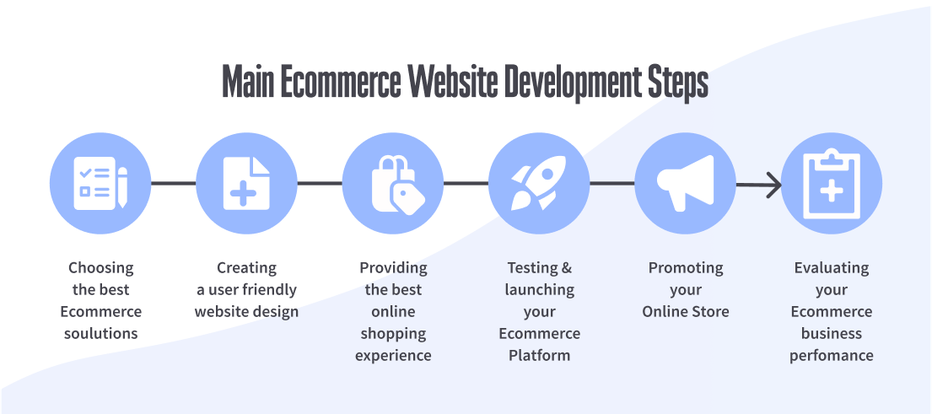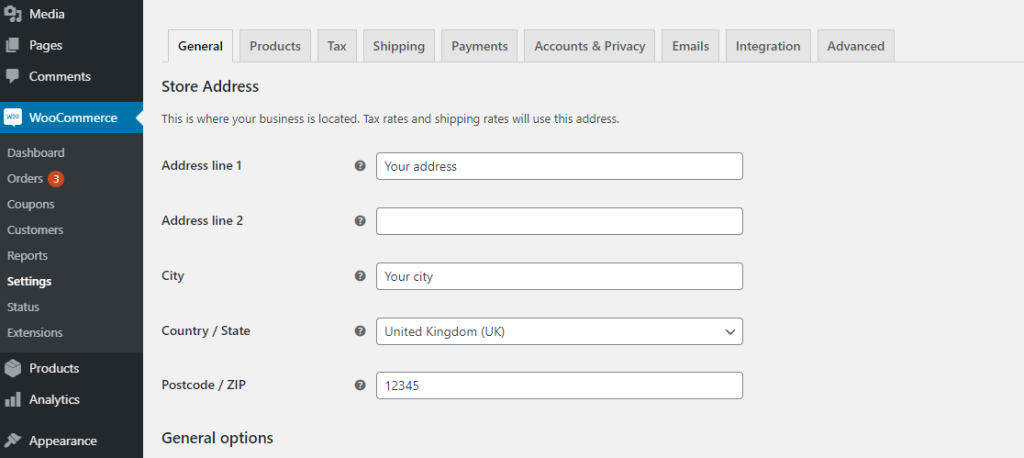Creating an E-commerce Site in WordPress: A Step-by-Step Guide
Introduction
E-commerce Locations in WordPress is booming, and it’s no wonder why. The comfort of online shopping has revolutionized the way we buy merchandise and administrations. If you’re looking to tap into this profitable showcase, making your e-commerce location is the to begin with step. But why select WordPress? It’s user-friendly and profoundly customizable, and with the right plugins, you can change it into an effective e-commerce stage. Let’s plunge into the step-by-step direct to get your online store up and running!
Step 1: Arranging Your E-commerce Site

E-commerce Location in WordPress
Before you begin building your location, you require a strong plan.
Define Your Niche
What are you going to offer? It’s pivotal to select a specialty that you’re enthusiastic about and that has an advertising demand.
Identify Target Audience
Who are your potential clients? Understanding your gathering of people makes a difference tailor your items and showcasing techniques to their needs.
Set Clear Goals
What are your objectives for your e-commerce site? Setting clear, quantifiable objectives will direct your endeavors and track your progress.
Step 2: Setting Up Your WordPress Site
Once your arrangement is prepared, it’s time to set up your WordPress site.
Choosing a Space Name
Your space title is your online personality. Select something interesting, paramount, and important to your business.
Selecting a Web-Facilitating Service
A dependable web facilitating benefit is fundamental for your site’s execution and security
Installing WordPress
Most facilitating suppliers offer one-click WordPress establishment. Take after the enlightening given by your have to get WordPress introduced on your domain.
Step 3: Selecting the Right E-commerce Plugin

WordPress plugins include usefulness to your location. For an E-commerce Location in WordPress, you’ll require a strong plugin.
Overview of Well known E-commerce Plugins
There are a few choices accessible, including WooCommerce, Shopify, and BigCommerce.
Why WooCommerce is the Best Choice
WooCommerce is the most well-known WordPress e-commerce plugin. It’s free, profoundly customizable, and has a tremendous library of extensions.
Installing WooCommerce
Go to your WordPress dashboard, explore Plugins > Include Modern, look for WooCommerce, and tap Introduce Presently. Once introduced, enact the plugin.
Step 4: Arranging WooCommerce Settings
With WooCommerce introduced, it’s time to design its settings.
General Settings

Set your store’s area, and cash, and enable/disable taxes.
Product Settings
Configure item settings, counting estimations, audits, and stock management.
Tax Settings
Set up assessment rates based on your business’s area and the locales you offer to.
Shipping Settings
Define shipping zones, strategies, and rates.
Payment Gateways
Set up installment doors like PayPal, Stripe, or bank exchanges to handle exchanges securely.
Step 5: Choosing a WordPress Theme
Your site’s plan is pivotal for drawing in and holding customers.
Importance of a Great Theme
A well-designed subject guarantees your location looks proficient and is simple to navigate.
Recommended E-commerce Themes
Themes like Astra, Storefront, and OceanWP are prevalent choices for e-commerce sites.
Installing and Customizing Your Theme
Install your chosen subject through Appearance > Subjects > Include Unused. Customize it utilizing the WordPress Customizer to coordinate your brand’s aesthetics.
Step 6: Including Items to Your Store
Group your items into categories to make the route simpler.
Creating Item Categories
Arrange your items into categories to encourage navigation.
Adding Basic Products
Add fundamental items with a title, depiction, cost, and images.
Adding Variable Products
For items with varieties (e.g., diverse sizes or colors), set up variable products.
Managing Inventory
Keep track of stock levels to dodge overselling and guarantee opportune restocking.
Step 7: Setting Up Fundamental Pages
Certain pages are fundamental for an e-commerce site.
Home Page
Create a lock-in the domestic page that highlights your best items and offers.
Shop Page
This is where clients browse all accessible items. Guarantee it’s well-organized and outwardly appealing.
Cart and Checkout Pages
These pages ought to be clear, directing clients easily through the obtaining process.
My Account Page
Allow clients to oversee their orders, addresses, and account details.
Step 8: Improving Your Store with Plugins
Enhance your site’s usefulness with extra plugins.
SEO Plugins
Plugins like Yoast SEO or Rank Math can offer assistance move forward your site’s perceivability in look engines.
Security Plugins
Ensure your location is secure with plugins like Wordfence or Sucuri.
Performance Plugins
Speed up your location with caching plugins like WP Rocket or W3 Add up to Cache.
Marketing Plugins
Boost deals with promoting plugins like MailChimp for mail campaigns and WooCommerce Follow-Ups.
Step 9: Customizing Your Store
Make your store one of a kind with customizations.
Customizing the Header and Footer
Ensure your header and footer are enlightening and reflect your brand.
Creating a Logo
A proficient symbol improves your brand’s identity.
Adding Widgets and Sidebars
Use widgets to include usefulness like look bars, item channels, and limited-time banners.
Step 10: Testing Your E-commerce Site
Before going live, test everything thoroughly.
Testing Functionality
Ensure all highlights, such as item look, cart, and checkout, work flawlessly.
Checking Versatile Responsiveness
With numerous clients shopping on versatile gadgets, guarantee your location is mobile-friendly.
Ensuring Browser Compatibility
Test your location on diverse browsers to guarantee it looks and capacities accurately on each.
Step 11: Propelling Your E-commerce Site
You’re nearly there! It’s time to dispatch your site.
Pre-Launch Checklist
Review everything to guarantee it’s idealized sometime recently going live.
Announcing Your Launch
Create a buzz around your dispatch with e-mail pamphlets, social media posts, and promotions.
Post-Launch Activities
Monitor your site’s execution and be prepared to address any issues that arise.
Step 12: Keeping up Your E-commerce Site
Maintenance is key to a fruitful e-commerce site.
Regular Updates
Regularly overhaul WordPress, along with your topics and plugins, to keep up security and performance.
Backups
Frequently back up your site to maintain a strategic distance from information loss.
Monitoring Location Performance
Utilize devices such as Google Analytics to screen your website’s execution and make choices based on data.
Step 13: Promoting Your E-commerce Store
Attract clients with compelling promoting strategies.
SEO Strategies
Enhance your site for look motors to pull in natural traffic.
Social Media Marketing
grabs your gathering of people on distinctive stages like Facebook, Instagram, and Twitter.
Conclusion
Creating an E-commerce Site in WordPress location in WordPress is a fulfilling journey that can lead to an effective online trade. By taking these steps, you’ll be well on your way to propelling a proficient and utilitarian e-commerce location. Keep in mind, that the key to victory lies in arranging, customization, and continuous upkeep. Cheerful selling!
FAQs
What is the Toll of Making an E-commerce Location on WordPress?
creating an E-commerce Location in WordPress the fetched changes based on components like facilitating, premium topics, and plugins. On normal, anticipate to spend between $100 and $500 initially.
Can I Utilize Any Facilitating Supplier for My WordPress E-commerce Site?
While you can utilize any supplier, it’s best to select one known for execution and security, like Bluehost or SiteGround.
How Secure is a WordPress E-commerce Site?
With appropriate security measures, counting SSL certificates, security plugins, and customary overhauls, a WordPress e-commerce location can be exceptionally secure.
Do I Require Coding Aptitudes to Make a WordPress E-commerce Site?
No, you don’t require coding aptitudes. E-commerce Locations in WordPress are planned to be user-friendly, indeed for beginners.
How Can I Progress the Stacking Speed of My WordPress E-commerce Site?
Use execution plugins, optimize pictures, select a quick facilitating supplier, and minimize the utilization of overwhelming plugins.

